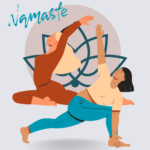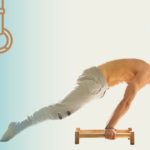In the world of yoga, a diversity of poses range from simple seated postures to challenging arm balances. Among these, the Peacock Pose, or Mayurasana, holds a prominent place due to its unique combination of strength, balance, and grace. The word ‘Mayurasana’ is derived from the Sanskrit words ‘Mayura,’ meaning peacock, and ‘asana’, meaning pose. Just as a peacock displays its resplendent feathers, this yoga pose unfolds the human body into an incredible display of strength and balance.
This pose might seem intimidating at first glance, but with patient practice and guided steps, it can be mastered over time. The journey of learning Mayurasana is as rewarding as the pose itself. As you overcome physical and mental obstacles, you’ll gain strength, clarity, and a profound sense of accomplishment.
Mayurasana is more than just physical exercise. It is a practice that symbolizes our ability to bear weight, handle stress, and rise above difficulties while maintaining grace and poise. Just like the peacock, practitioners of Mayurasana learn to hold themselves high and stay balanced amidst challenges.
Benefits of Practicing Peacock Pose
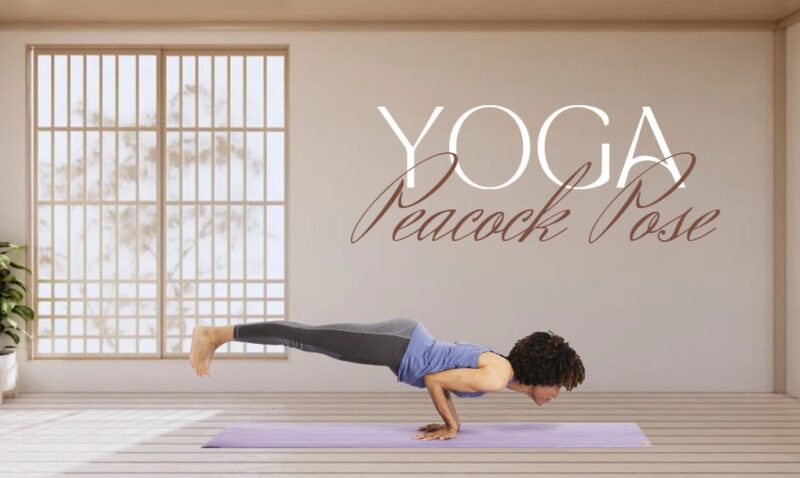
The Peacock Pose is a comprehensive workout that benefits multiple aspects of the body. As a formidable arm balance, it significantly strengthens your wrists, forearms, shoulders, and core. By doing so, it enhances your capacity to perform other poses that require these muscle groups. Moreover, Mayurasana is also known to improve digestion and metabolism, owing to the pressure exerted on the abdominal region during the pose.
Mentally, the practice of Mayurasana offers significant benefits as well. The intense concentration required to balance in this pose cultivates focus and mental resilience. Moreover, the journey towards achieving this pose boosts self-confidence and enhances the mind-body connection, making yoga a truly holistic experience.
Furthermore, Mayurasana has a unique spiritual dimension. In traditional yogic texts, the peacock is said to symbolize immortality and love. It is believed that practicing this pose can awaken these energies within us, leading to greater self-awareness and inner peace.
Preparation: Warm up and Stretches
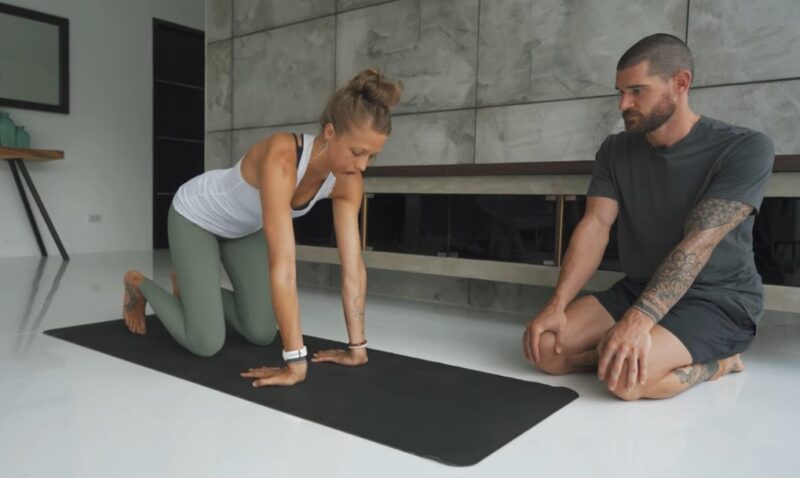
Before attempting the Peacock Pose, it is essential to properly warm up your body. Begin with a few rounds of Surya Namaskar (Sun Salutation) to engage all major muscle groups and increase blood circulation. You should also include targeted stretches for the wrists, forearms, shoulders, and abdomen, as these areas will be under significant strain in Mayurasana.
Postures such as Adho Mukha Svanasana (Downward Facing Dog) and Chaturanga Dandasana (Four-Limbed Staff Pose) are especially useful in preparing for Mayurasana. They help condition the arms, wrists, and shoulders for the weight-bearing requirements of the pose. Also, practicing core-engaging poses like Navasana (Boat Pose) can be beneficial.
To further prepare your body, include a few balance poses in your warm-up routine. Tree Pose (Vrikshasana) and Crow Pose (Bakasana) are excellent choices. These will help cultivate the balance and focus required to maintain the Peacock Pose.
Step-by-Step Guide to Peacock Pose
- Step 1: Start by sitting on your heels in Vajrasana (Diamond Pose) with your knees hip-width apart. Place your palms on the floor with fingers pointing towards your body and elbows bent. Press your hands firmly into the floor.
- Step 2: Extend your legs backward one at a time, coming into a push-up position but with your hands in the reverse direction. Your body should form a straight line from your head to your heels.
- Step 3: Now, bend your elbows and press them into your abdomen. Slowly shift your body weight forward onto your hands while lifting your legs off the floor. Continue to engage your core and keep your body straight like a plank.
Engaging the Core
In Mayurasana, the core plays a pivotal role. It is the ‘powerhouse’ that maintains the stability and balance of the pose. When you shift your body weight onto your hands and lift your legs, your core must be strong enough to support this transition. This strength comes from regularly practicing poses that engage and strengthen the core.
Remember, it’s not just about brute force. Engaging the core in yoga is about creating a balance between strength and flexibility. For Mayurasana, this means having the muscular strength to lift and hold your body weight and the flexibility to adjust and refine the pose.
An effective way to engage your core is to visualize drawing your navel towards your spine. This mental imagery prompts the activation of your core muscles, providing the necessary support and balance in Mayurasana.
Modifications and Variations of Peacock Pose for Beginners and Advanced Practitioners
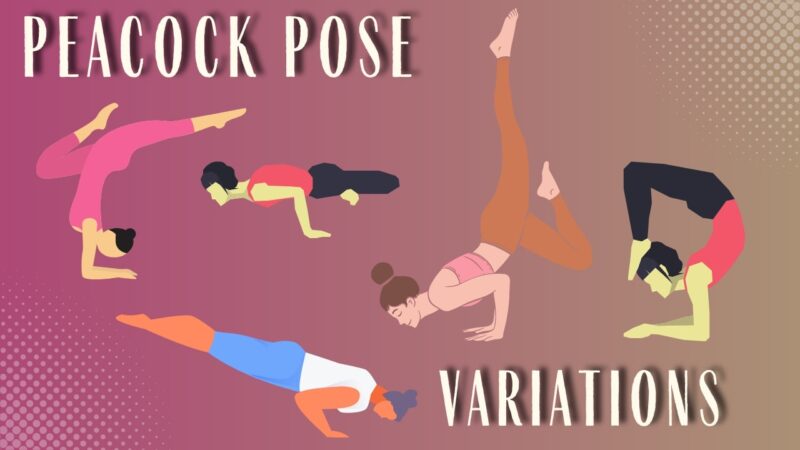
Mayurasana is a challenging pose and may not be accessible to everyone initially. Thankfully, there are modifications and props that can make the pose more attainable for beginners. One such modification is performing the pose with your feet resting against a wall for support. Yoga blocks can also be used to elevate the hands, reducing the strength needed to lift the body.
For more advanced practitioners looking to deepen their practice, variations of Mayurasana can provide an added challenge. One such variation is Padma Mayurasana (Lotus Peacock Pose), where the legs are in Padmasana (Lotus Pose) during the arm balance.
Regardless of your skill level, always remember that yoga is not about forcing your body into a pose. It is about finding a balance between challenge and comfort, exertion and relaxation. Therefore, choose the variation or modification that suits your body’s current abilities.
Common Mistakes to Avoid
While practicing Mayurasana, it’s easy to fall into some common mistakes. The most prevalent one is overstraining the wrists without proper warm-up or alignment. Ensure your palms are firmly grounded and your fingers spread wide to distribute the weight evenly.
Another mistake is not engaging the core enough, causing an arch in the lower back. A strong core helps maintain a straight line from head to toe, minimizing the risk of back pain.
Lastly, remember not to hold your breath. It might be tempting to do so when you’re concentrating hard on balancing, but breathing is crucial for maintaining balance and providing your muscles with the oxygen they need.
Developing Strength and Stability
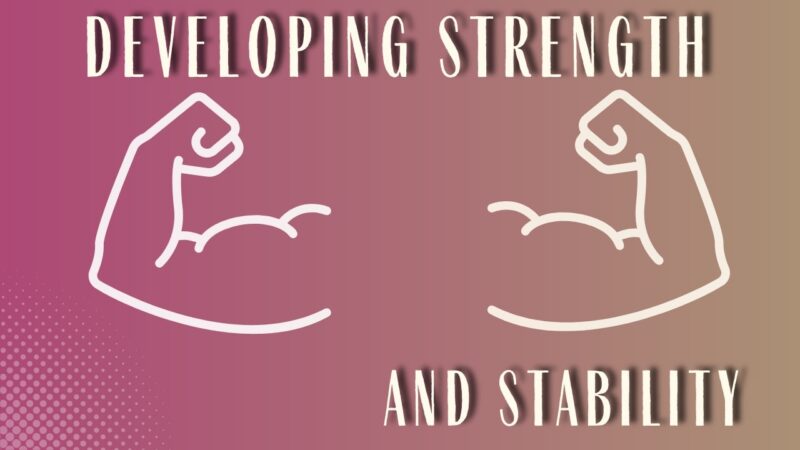
Strength and stability are the pillars of the Mayurasana. Regular practice of yoga asanas that work on these two aspects can significantly aid your journey toward the Peacock Pose. Plank Pose, Chaturanga Dandasana, and Navasana are excellent for developing strength in the arms, wrists, and core.
Stability in Mayurasana is not just physical but mental as well. As you develop physical strength, also cultivate mental steadiness through practices like meditation and Pranayama (breathing exercises). They help you remain focused and composed, both critical for maintaining balance in challenging poses.
Remember, consistency is key in yoga. Regular, dedicated practice, combined with patience and self-compassion, will gradually lead you to success in Mayurasana.
Tips for Improving Balance in Peacock Pose
Improving balance in Mayurasana involves a blend of strength, focus, and proper alignment. Ensure your hands are placed correctly, your core is engaged, and your body is aligned in a straight line.
Visualization can be a powerful tool for balance. Imagine a string attached to your chest, pulling you forward, and another string attached to your feet, pulling you up. This image helps distribute your weight evenly.
Practicing with a mirror can be helpful in checking your alignment and making necessary adjustments. Over time, this external feedback will develop into internal body awareness, helping you maintain balance without the mirror.
In your journey to master the Peacock Pose, enhancing your balance is crucial. Exploring other yoga practices, such as those designed for combat sports athletes, can provide additional techniques to improve your stability and control.
Breathing Techniques
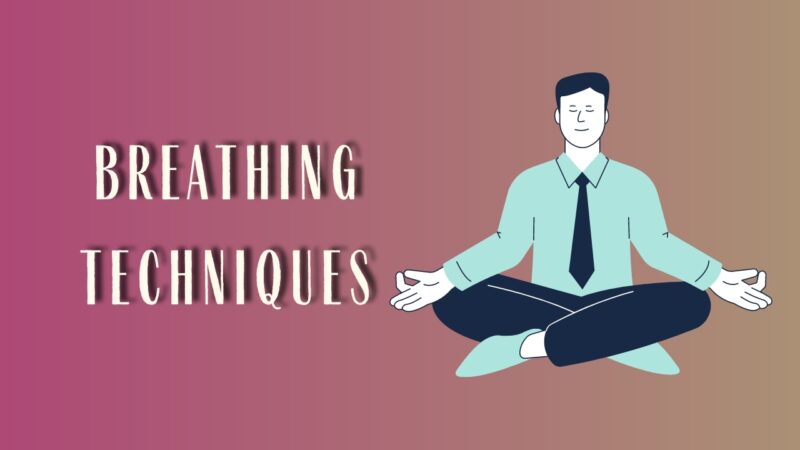
Breathing plays an essential role in the practice of Mayurasana. It provides a rhythm that helps maintain balance and relaxes the body, making the pose more sustainable. Inhale deeply as you prepare for the pose and exhale steadily as you lift your body into position.
While holding the pose, maintain smooth and steady Ujjayi breaths. This type of breath is achieved by constricting the back of your throat, creating a soft sound as you breathe. Ujjayi breathing enhances focus, releases tension, and provides a calming effect that aids in maintaining the pose.
Remember, if your breath becomes strained or uneven, it might be a sign that you are pushing yourself too hard. In such cases, gently exit the pose and allow yourself to rest.
Final Words
The journey toward mastering Mayurasana is a beautiful blend of strength, balance, and inner growth. It reminds us that yoga is not just a physical practice but a holistic path of self-development. Mayurasana encourages us to embrace challenges with grace and poise, much like the majestic peacock.
This journey might be challenging, but remember that every attempt brings you one step closer to your goal. Trust your body, respect its limits, and cultivate patience and persistence. With time and practice, the Peacock Pose will unfold in all its beauty and strength.






